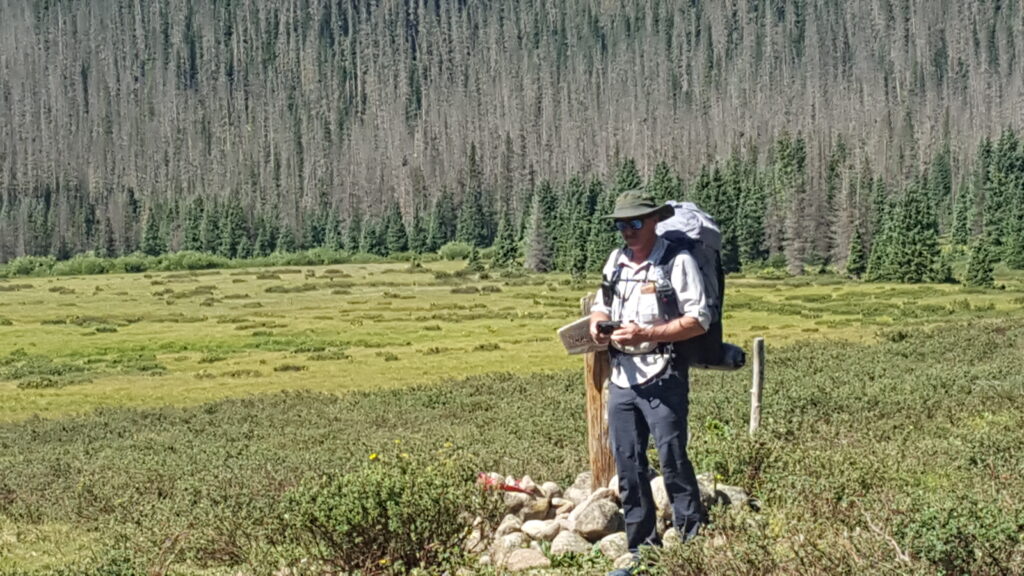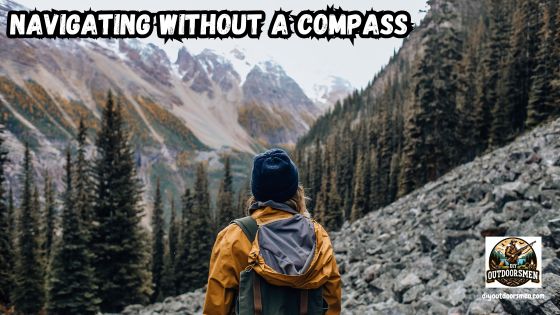Contents
- 1 Understanding Sun-Based Navigating
- 2 Navigating by the Stars and Moon
- 3 Navigating Using Natural and Artificial Landmarks
- 4 Practical Tips for Navigating Without a Compass
- 5 Additional Reflections on Natural Navigation Techniques
- 6 Frequently Asked Questions about Navigating without a Compass
- 7 Final Thoughts on Navigating Without a Compass
I have often found the art of navigating your way without a compass to be an engaging and useful skill. When I first studied natural techniques for finding your way, I was surprised at how much information the environment can provide. Relying on the sun, stars, and landmarks gives me the ability to figure out directions even when my instruments fail.
- Sun-Based Navigation: The sun is one of the most reliable guides for determining direction. I depend on it during the day, specifically by noting its predictable behavior. The basic rule is that the sun rises in the east and sets in the west.
- Navigating by the Stars: After the sun sets, the night sky offers alternative methods for orientation. The most obvious guide for nighttime orientation in the northern hemisphere is Polaris. I have always looked for the configuration of the Little Dipper in the sky and followed its handle to locate the North Star.
- Natural and Artificial Landmarks: Mountains, rivers, and even unusual trees can help provide orientation when the sky is overcast or when I am in unfamiliar territory.I sometimes rely on man-made landmarks. Roads, fences, and buildings can provide useful reference points.
- Prior Planning and Preparation: Before you go, take note of potential landmarks, both natural and manmade, and become familiar with where you will be and where you want to go.
My experiences have taught me that nature holds plenty of clues if one pays close attention to its patterns. In this article, I share techniques and methods that I have learned over time, which can help anyone determine direction effectively without a compass.
The sun is one of the most reliable guides for determining direction. I depend on it during the day, specifically by noting its predictable behavior. The basic rule is that the sun rises in the east and sets in the west. My familiarity with the sun’s daily course has been particularly handy when I am outdoors and need a quick reference point to figure out which way to go.
During daylight hours, the movement of the sun across the sky provides critical cues for finding your way. In the morning, I know that the sun will appear along the eastern horizon. By mid-day, when the sun reaches its highest point, determining the general direction becomes easier.
In the northern hemisphere, I have noticed that shadows shrink and, at solar noon, they tend to point roughly to the north. In the southern hemisphere, the reverse is true, and shadows primarily indicate the south. This natural clock has consistently guided me in various outdoor settings.
Shadows and the Analog Watch Method
In many situations, using shadows as a guide can be extremely practical. I recall a time when I had an analog watch and needed to confirm directions quickly. The method involves pointing the hour hand toward the sun and then estimating the midpoint between the hour hand and the 12 o’clock mark.
In the northern hemisphere, that midpoint is generally aligned toward the south. Although this technique might lose accuracy when day lengths vary considerably, it has proven to be a helpful fallback when modern tools are unavailable.
After the sun sets, the night sky offers alternative methods for orientation. In my experiences, learning to identify key stars and celestial patterns has been both fascinating and practical. At night, I especially rely on Polaris, more commonly known as the North Star, and on the crescent shape of the moon to establish bearings when darkness falls.
Finding Polaris: The North Star
The most obvious guide for nighttime orientation in the northern hemisphere is Polaris. I have always looked for the configuration of the Little Dipper in the sky and followed its handle to locate the North Star.
Even though modern technology offers many alternatives for direction, my reliance on the night sky remains a timeless skill. By observing the stars, I am able to determine which way is north, enabling me to plan my route accordingly.
Finding Your Way with a Crescent Moon
An interesting method I often use involves a crescent moon. I learned that by connecting the two tips of the crescent and extending that imaginary line down to the horizon, I can approximate a direction.
In the northern hemisphere, the point where this line meets the horizon typically indicates the south. I have tried this technique on several clear evenings and found it both reliable and engaging, as it connects me with the natural rhythm of the night sky.
During many of my excursions, I have noticed that natural landmarks offer significant hints for determining direction. Mountains, rivers, and even unusual trees can help provide orientation when the sky is overcast or when I am in unfamiliar territory. There is both beauty and practicality in using the surrounding landscape as a guide.
Observing Natural Features
I have found that natural features, such as rivers and hills, tell a story about the land. Rivers, for instance, generally flow in a predictable manner, often following a downhill course that is influenced by the topography.
I recall following a river along a hiking trail and noticing that twists and turns in the water often indicated areas of open space or higher ground. Trees may also display peculiar growth patterns because of popular winds and sunlight exposure. These observations help me deduce cardinal points when other methods are less clear.
Using Man-Made Structures
In modern environments, I sometimes rely on man-made landmarks. Roads, fences, and buildings can provide useful reference points. When I find myself in a town or city, these structures help me align my internal map with the geographical layout around me.
Although I am most comfortable with natural methods for navigating, I appreciate how artificial elements can complement these processes, making it easier to confirm directions, especially in areas where the terrain is mixed.
Even with methods that use the sun and stars, I have encountered situations where extra precautions have been essential. These practical tips have come from personal trials and a willingness to learn through experience.
I like to practice these techniques in familiar areas before venturing into unknown territory. Careful planning and knowledge of the local environment have often prepared me for unexpected changes in weather or reduced visibility.
One of the things I always remember is to stay calm when things do not go as planned. If I am unsure of my location, I pause and evaluate my surroundings. I think back on the clues the sun or the stars might have offered earlier in the day or night.
With natural methods for navigating, immediate observations—such as the direction of shadows or the layout of nearby landmarks—are extremely helpful. Another tip involves paying close attention to popular winds; I have noted that certain regions consistently exhibit wind patterns that can serve as directional hints.
I also believe that learning through practice is really important for honing one’s skills in finding your way. Before trusting natural methods in critical situations, I have spent time in safe areas like parks and open fields, testing these techniques and observing how they work in real conditions.
This process builds confidence and reinforces my natural instincts. I occasionally leave markers or use existing tracks to compare my estimated directions with the actual layout of the terrain. Over time, my trust in these methods has grown, making me feel more assured when I switch away from modern navigation aids.
Additional tips I follow include checking local weather conditions and being aware of any shifts in natural light. I remember a time when sudden cloud cover dimmed the clarity of the sun’s path, which made me pay even closer attention to the details of my environment.
Carrying a simple analog watch or even noting the approximate time on my phone can sometimes provide extra context on the sun’s position. It may sound simple, but these incremental observations often provide the extra assurance needed when venturing into unfamiliar areas.
Over the years, I have come to appreciate the depth and richness that comes from relying on natural clues for direction. There is something wonderfully freeing about knowing that you can use the environment as your guide.
Whether it is the whisper of the wind, the subtle shift in light during sunset, or the way shadows dance on the ground, every detail plays a part in a broader picture that helps you figure out your path.
This approach not only reduces dependence on modern technology but also deepens your connection with nature. When you spend time outside, learning to read these natural signs, you begin to notice things that might easily be overlooked in daily life.
The contrast between the predictable cycles of the sun and the mysterious patterns of the stars creates a unique blend of science and art. I have found that these moments of observation can be meditative, allowing you to pause and truly appreciate the world around you.
Many outdoor enthusiasts have shared with me the satisfaction of mastering these techniques. As you experiment with different methods—whether it’s using the position of the sun, following the gentle cues of the moon, or observing man-made landmarks—you start to gain a well-rounded sense of spatial awareness.

This practice not only improves your ability to find your way but can also be a creative exercise in problem-solving. By continuously engaging with your surroundings, you develop a more intuitive sense of direction, which can be especially reassuring when conditions are less than ideal.
Moreover, incorporating these natural skills into your outdoor adventures can inject a delightful sense of discovery into each trip. Instead of solely relying on technology, you begin to trust your own observations and instincts.
This shift in perspective often leads to a more immersive experience, where each hike or trail walk becomes an opportunity to learn more about the intricate interplay of light, landscape, and life. Over time, this not only boosts your confidence in the great outdoors but also enriches your overall connection with nature.
I have often been asked by others how they can reliably find their way without the use of a compass. Here are some queries I have encountered along with my personal responses.
How do I reliably determine east and west without a compass?
I use the sun as a primary guide. I observe that the sun consistently rises in the east and sets in the west. When the sky is clear, even a brief glance can confirm these directions. If I need further confirmation, I also pay attention to the shadows it casts at different times of the day.
What should I do when the sun is obscured by clouds?
When cloud cover limits visibility, I switch to using available landmarks and any visible sections of the sky. I also rely on techniques involving the crescent moon or, during the night, by finding Polaris. Familiarity with the local environment and regular practice of these methods help me approach such situations with greater confidence.
Can I still use an analog watch to find my way on overcast days?
es, I sometimes use an analog watch if the sun is only faintly visible. By pointing the hour hand in the direction of the sun and bisecting the angle between it and 12 o’clock, I can estimate the south in the northern hemisphere. Although this method is not perfectly precise in every condition, it serves as a useful backup when modern tools are not available.
How important is it to practice natural techniques for finding your way?
I believe that practice is very important. Repeatedly using these methods in familiar settings helps build both familiarity and confidence. It reinforces the ability to read natural clues accurately, ensuring that when unexpected conditions arise, you are already prepared to adapt and find your way.
My adventure into natural ways of finding your way has taught me that relying solely on modern tools is not always necessary. Whether it is by watching the sun, identifying key stars, or noting the landscape around me, I have learned that nature provides plenty of guidance if one is willing to look closely.
This approach to direction gives a strong sense of independence and fosters a deeper bond with the environment. Every time I practice these techniques, I notice new details that I had previously overlooked. Each outdoor excursion becomes more immersive when I rely on my own skills to figure out which way to go.
The little challenges encountered along the way helped me develop a sharper sense of spatial awareness. Paying attention to subtle changes in natural light, the layout of the ground, and even local weather patterns all contribute to a successful adventure.
This self-reliance has served me well in moments when modern tools were either unavailable or unreliable. I have grown to appreciate the clear, logical basis behind solar and celestial methods. They remind me that even in an era dominated by technology, traditional techniques still hold very important practical value.
Exploring without the convenience of a compass challenges me to engage more deeply with my surroundings. I encourage anyone interested in outdoor adventures to invest time in practicing these natural methods.
Over time, you will not only improve your ability to find your way but also gain a richer, more intimate experience of the environment around you. The bottom line, trusting your observations, staying calm, and practicing frequently can turn every outing into an opportunity for discovery and personal growth.
Check Out Our Latest Articles:
- 14 Tips And Tactics For Public Land Mule Deer Hunting

- 6 Features of Waterproof Ground Blinds For Wet-condition Elk Hunting

- 4 of the Best DIY Elk Hunting Areas In Colorado

- 8 Tips for Choosing the Best DIY Elk Hunting States

- 5 Hunting Gear Packing List Essentials For DIY Trips

- 7 Tips For Hunting The Elk Migration

As always, stay safe, enjoy the journey and please try to leave it cleaner than you found it. If you have any comments, questions, ideas, or suggestions please leave them in the comment section below and I’ll get back to you ASAP. You can follow us on YouTube: Man Art Creations for videos of our DIY Adventures.
P.S. – Thanks so much for checking out our blog we really appreciate it. Just so you know, we may receive a commission if you click on some of the links that appear on our site. This helps us keep our content free and up-to-date for everyone. We appreciate your support!



